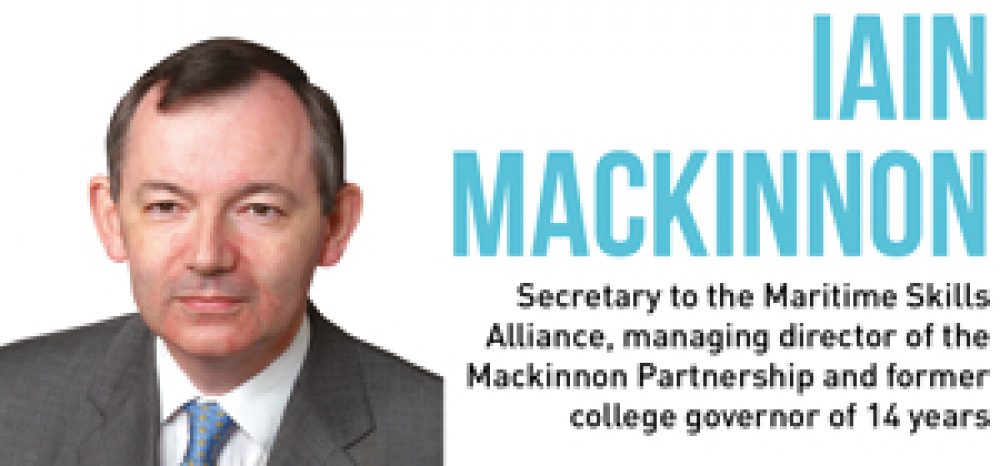The number of Trailblazer apprenticeship standards is growing as the 2017/18 cut-off date for the current frameworks system approaches. Writing in a personal capacity Iain Mackinnon outlines the journey of one such standard that is now ready for delivery.
I was at a seminar the other day run by Nautilus International, the Merchant Navy officers’ union, and the General Secretary wove Beatles’ lyrics into all his comments.
Following his example, I’d have to say that ‘long and winding road’ won’t do to describe our Trailblazer journey because it implies that the road was at least clearly headed in the right direction at all times.
And ‘hard day’s night’ rather underestimates the time it’s taken, and the slog involved.
Despite our frustration over the process we have found new flexibilities in the new rules
But I’m not writing this to criticise or moan.
Our first completed Trailblazer has taken far longer than any of us thought possible, and been far more tortuous than any of us thought possible.
And after 18 months of effort we have won approval for something we already have — an apprenticeship for deck ratings (operatives at sea) which satisfies both the industry and the Department for Business, Innovation and Skills (BIS).
And yet I think we have we gained something worth gaining. Let me explain.
One of the prime drivers for us in getting involved in Trailblazers when we did was a worry about how BIS’s explicit ‘employer-led’ approach would work in a sector subject to international regulation.
That regulation lays down competence standards for different grades of seafarer (giving them certification, incidentally, which is valid across the world), and those standards are enshrined in law — we cannot change them.
Our job in the Trailblazer therefore was to get BIS to accept that fact, moderating a pure form of employer leadership — and they’ve done so.
We know that what we do is good quality, giving apprentice ratings a broad-based foundation for a career which can take them all the way to ship’s Master and beyond.
Getting BIS to see how they could accept what we do without damaging anything was the tough bit.
Despite our frustration over the process we have found new flexibilities in the new rules.
Under the previous system, SASE — Specification of Apprenticeship Standards in England — ruled, and ruled inflexibly. Despite BIS’s default position that it prefers apprenticeships not to include qualifications, we now have two core vocational qualifications, and some specialist ones, such as the Entry Into Enclosed Spaces certificate, which trains people to avoid a major cause of death on ships.
SASE did not allow us to do that, so the new standard is better than the existing one.
To its credit, BIS has tried hard to understand what’s different about the maritime sector — a sector one of them called ‘quirky’.
We don’t mind ‘quirky’ — quite like it, in fact — so long as they listen and learn. That’s taken time — a lot of time.
We took two civil servants to HMS Raleigh (the Royal Navy’s shore-based training facility) to show them what ratings were.
And we took three to Dunkirk and back on a ferry, introducing them to five existing apprentice ratings, with briefings from several off-duty officers. That was a big investment in time for the employers involved.
BIS also accepted that our working group, while employer-led and employer-dominated, includes two trade unions, two colleges, and SQA (as the sole awarding body we work with), as well as the regulator. That’s the way the maritime industry works.
The final stage was to win approval for the end-point assessment, and that took a frustrating 27 weeks. It took so long because we needed BIS to approve a procedure enshrined in international law and see how it could fit its own criteria. They had to compromise (on interpretation only); we did not, and both the approved Standard and the longer Assessment Plan effectively re-state in BIS’s language what already happens.
‘Trailblazer’ is a hackneyed term — but not a bad metaphor. We have blazed a trail, and I think we have shown BIS how it can recognise and accept difference while in no way compromising its commitment to high standards — which we share.









Well done on getting a qualification included – hair and beauty is going through the same policy battle with BIS. The Trailblazer process has been tortuous, time consuming and expensive as small business owners fall by the wayside because the whole process has been so drawn out – but the prospect of raising standards keeps us going.